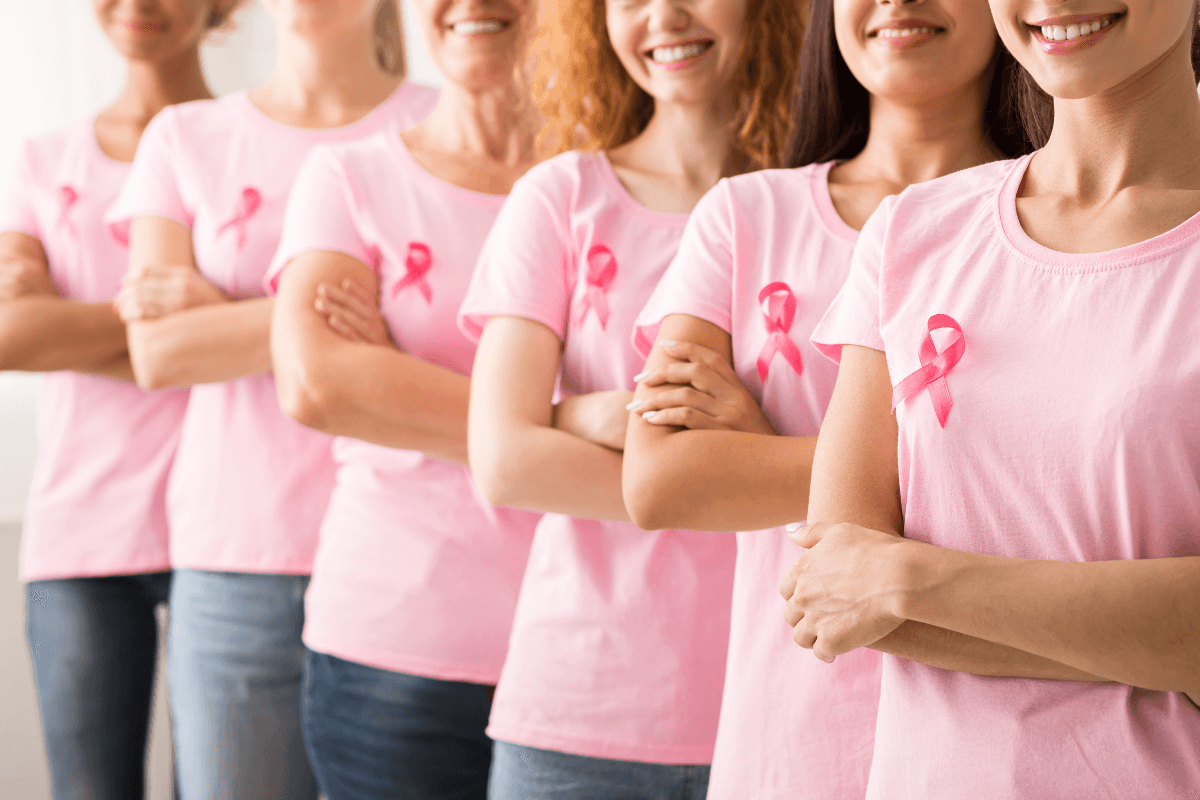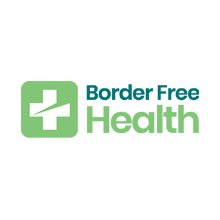Key Takeaways
Breast Cancer Awareness Month is a chance to learn, share support, and plan next steps. Small, steady actions can help people feel more prepared.
- Know the basics: understand screening and common warning signs
- Use trusted sources: choose evidence-based information and updates
- Support matters: practical help often beats perfect words
- Make it personal: ask a clinician what fits your risks
October can bring up a lot of feelings. You may be thinking about your own health. You may be supporting a loved one, friend, or coworker.
This article focuses on clear, compassionate basics. It covers what breast cancer is, how screening works, and how awareness efforts can help. It also shares ways to talk about breast health without fear or blame.
If you want more related reading, Women’s Health Posts can help you explore screening, hormones, and aging topics.
Breast Cancer Awareness Month: What It Is and Why October Matters
Awareness campaigns can do more than “raise visibility.” They can make it easier to schedule a mammogram, ask a hard question, or check in on someone who feels alone. October became the main month for many organizations because early national campaigns used it to promote education and screening.
It can help to hold two truths at once. Breast cancer is common, and most breast changes still turn out to be benign (not cancer). The goal of awareness is not panic. It is timely attention, better information, and stronger support systems.
Some people use October to refresh their plan for preventive care. Others focus on advocacy, caregiving, or fundraising. If you want background on the campaign’s history, a short American Cancer Society overview offers neutral context and common goals.
What Breast Cancer Is, in Plain Language
The phrase what is breast cancer usually points to a simple idea. It is cancer that begins in breast cells and grows in an uncontrolled way. Over time, abnormal cells may form a lump, change breast tissue, or spread to other areas.
Breast cancer is not one single disease. It includes different subtypes that behave differently and respond to different treatments. Subtypes may be described by receptors, such as hormone receptor-positive disease, or by proteins like HER2. These details are medical, but they matter because they guide care decisions.
People of any gender can get breast cancer, although it is far more common in women and people assigned female at birth. Risk is shaped by age, genetics, breast density, hormones, and family history. Environment and lifestyle may also play a role, but they do not tell the whole story.
For a trustworthy medical overview, the National Cancer Institute summary explains terms like staging and tumor biology in plain language.
Breast Cancer Screening and Early Detection
Screening aims to find cancer before symptoms appear. The most common screening test is a mammogram, which is a low-dose X-ray of the breast. Screening schedules can vary by age, personal risk, and local guidance.
In the U.S., the U.S. Preventive Services Task Force (USPSTF) recommends biennial screening mammography for women ages 40 to 74 who are at average risk. Some people start earlier or screen more often because of higher risk. It helps to review your personal factors with a clinician. For the current language and updates, see the USPSTF recommendation statement.
What different screening tests can look like
Not every test fits every person. Mammography is the standard for routine screening, but other tools may be added for specific situations. Ultrasound uses sound waves and may help clarify a finding, especially in dense breasts. Breast MRI uses magnetic imaging and is often reserved for higher-risk people because it is very sensitive and can lead to follow-up testing. A clinician may also perform a clinical breast exam during a routine visit, but it does not replace imaging when screening is needed.
| Screening tool | Common role | Why it may be used |
|---|---|---|
| Mammogram | Routine screening | Finds changes before symptoms in many people |
| Ultrasound | Follow-up imaging | Helps evaluate a lump or unclear mammogram |
| Breast MRI | High-risk screening | May be added for genetics or strong family history |
Age and health status can change screening decisions. If you are helping an older adult plan care, Cancer Screenings For Seniors explains how clinicians often weigh benefits, limits, and overall health.
Breast Changes to Take Seriously Without Panicking
Many people notice breast changes at some point. Most causes are not cancer, including cysts, hormonal shifts, or infections. Still, it is reasonable to ask about changes that are new, persistent, or worsening.
Common changes to discuss with a clinician include a new lump, thickening, or swelling. Skin dimpling, nipple changes, or a new nipple discharge can also matter. Pain is common and often benign, but pain paired with a new change deserves attention.
- New lump: especially if firm or fixed
- Skin change: dimpling, redness, or scaling
- Nipple change: inversion or persistent rash
- Size shift: one breast enlarges without a clear reason
- Swelling: underarm or collarbone area
Note: If you find a change, it can help to write down when it started and what changed. That simple timeline can support a calmer, clearer visit.
Breast Cancer Risk Factors and Prevention-Leaning Steps
Risk factors describe patterns seen across large groups. They do not assign fault, and they do not predict any one person’s future. Some risks cannot be changed, such as age, certain inherited gene variants, and a strong family history.
Other factors are more modifiable, even if the benefit is not guaranteed. These include alcohol intake, physical activity, body weight after menopause, and use of certain hormone therapies. “Prevention” often means reducing risk where you can, while keeping screening up to date.
Breast cancer awareness tips can be simple and realistic. Keep a record of your family cancer history. Ask if you have dense breasts and what that means for screening. If lifestyle changes feel overwhelming, choose one small step and build gradually.
For broader, practical ideas that support overall cancer risk reduction, How To Prevent Cancer offers a clear list of habits to discuss with a clinician.
Breast Cancer Awareness Day and Week in 2025
Some people look for a single day to focus their efforts. There is no single global date used everywhere, so “awareness day” can mean different things depending on the organization and country. In the U.S., many groups highlight National Mammography Day, which falls on the third Friday in October.
If you are searching for breast cancer awareness day 2025, that third Friday lands on October 17, 2025. Many communities also run local “awareness week” events during October. If you are planning something, it helps to confirm dates with a local hospital, public health department, or national cancer organization.
One useful approach is to anchor the day to an action. That might be booking a screening, updating a family history list, or organizing a ride to an appointment. A small, specific goal often feels more doable than “doing everything.”
Life After a Diagnosis: Treatment, Side Effects, and Bone Health
A breast cancer diagnosis can shift daily life fast. Treatment plans vary widely, and they are tailored to tumor type, stage, and personal health factors. Common approaches include surgery, radiation, chemotherapy, hormone therapy, and targeted therapy. Many people receive a combination over time.
Side effects also vary, and they can be physical and emotional. Fatigue, sleep changes, early menopause symptoms, and mood strain are often discussed in follow-up care. If reproductive aging or symptom changes are part of your story, Menopause And Beyond offers context for common body changes and supportive care topics.
Bone health is another area that may come up during and after treatment, especially with certain hormone therapies or early menopause. Clinicians may discuss calcium and vitamin D, weight-bearing activity, bone density testing, and sometimes prescription options. For readers comparing names they have heard, Cancer Treatment Options lists medication categories in one place for reference.
If bone-strengthening medicine is part of care, people may hear brand and generic names. Examples include denosumab and bisphosphonates, used in specific clinical situations. For background on a commonly referenced option, see Prolia Prefilled Syringe for general product information to review with a clinician.
Emotional health deserves the same respect as physical symptoms. Anxiety and depression can show up during diagnosis, treatment, or survivorship. If you want a plain-language overview of signs and supports, Depression Symptoms And Treatment can help you prepare for a conversation with a healthcare professional.
Community Support and Breast Cancer Awareness Month Activities
Awareness is often most powerful when it feels human. Community events can create a sense of connection, especially for people who feel isolated after treatment. They can also open doors to practical support, like transportation, meals, or help managing appointments.
Breast cancer awareness month activities can range from small to large. A workplace might host a lunchtime education talk with a nurse educator. A neighborhood group might do a walking fundraiser or a meal train. Some communities host free or low-cost screening days, depending on local resources.
- Education night: invite a clinician for Q&A
- Ride network: plan rides to appointments
- Reminder campaign: help friends schedule screenings
- Care packages: include practical, comfort-focused items
- Story sharing: center consent and privacy
Words matter during awareness efforts. Aim for language that supports choice and dignity. “I’m here with you” and “How can I help this week?” often land better than pressure or advice. For broader cancer advocacy and prevention observances, National Cancer Control Month provides context on public health efforts and community education.
Breast Cancer Awareness Month Facts and Shareable Materials
When information is clear, it spreads more easily. Breast cancer awareness month facts work best when they are short, accurate, and linked to a practical next step. If you share online, consider adding a reminder that guidelines vary by risk and age.
Here are ten quick facts people often find helpful. They are framed to support learning, not fear.
- Not one disease: there are several subtypes
- Men can be affected: breast cancer is not women-only
- Most lumps aren’t cancer: evaluation still matters
- Family history helps: details can guide screening choices
- Genetics is one piece: many cases have no known mutation
- Screening saves time: earlier detection can broaden options
- Dense breasts vary: extra imaging may be discussed
- Treatment is personal: plans differ for good reasons
- Support improves coping: practical help reduces stress load
- Survivorship has needs: follow-up care is part of care
For posters, flyers, or school materials, use simple visuals and readable fonts. Keep messages supportive and avoid “blame” language. If you include statistics, cite a reliable organization and keep numbers current.
If you are looking for more topic hubs to share with a group, Cancer Education Posts organizes related reading by theme and condition. For bone health topics that sometimes come up in survivorship, see Actonel as a reference point for discussions about osteoporosis medicines.
Recap
Awareness efforts are most helpful when they lower barriers to care. That can mean learning a few warning signs, understanding screening options, or offering practical support. It can also mean making room for complex feelings, including fear, grief, and hope.
If something in this topic feels personal, you do not have to carry it alone. A primary care clinician, OB-GYN, or breast specialist can help you sort out risk, screening timing, and next steps. Bringing a trusted person to appointments can also help you remember details and feel supported.
This content is for informational purposes only and is not a substitute for professional medical advice for your personal situation.

